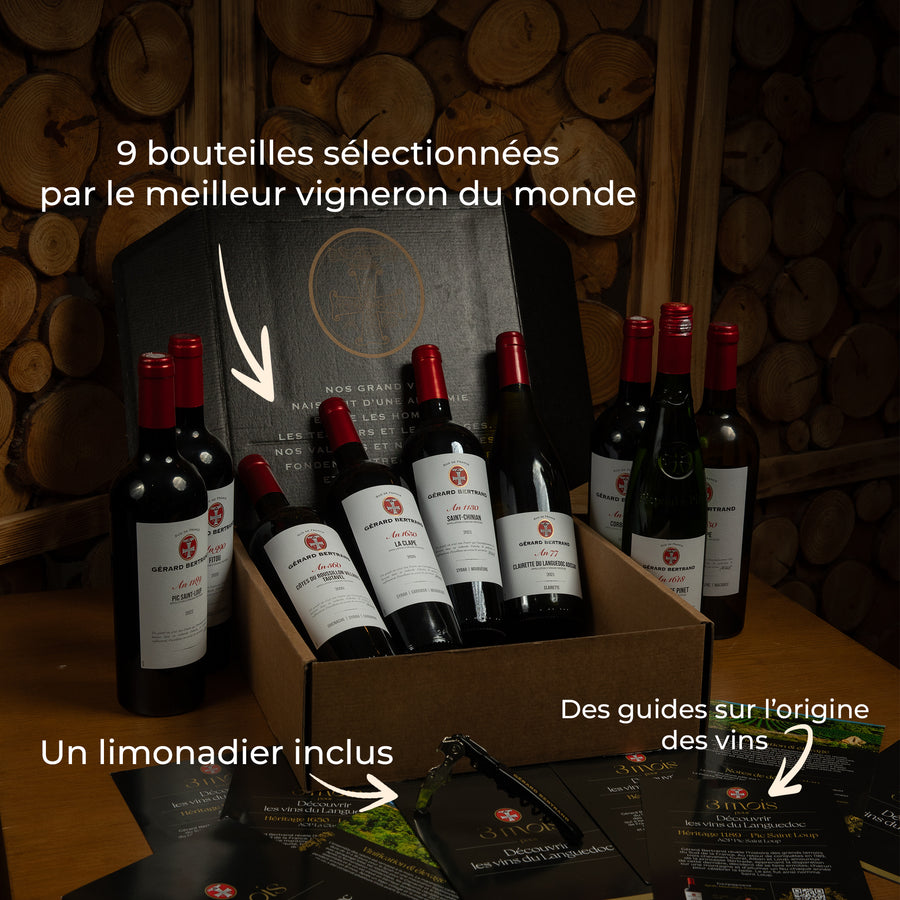Vintage 2019 - Trends and perspectives in the vineyards Gérard Bertrand

2019 returns to a more Mediterranean profile than the previous vintage. A vintage full of nuances that more clearly reveals the specificities and differences between each terroir, from the Pyrenean confines ( Domaine de L'aigle in AOC Limoux and Château la Soujeole in AOC Malepère) to the foothills of Larzac (Château La Sauvageonne in AOC terrasses du Larzac) via the coast (Châteaux L'Hospitalet, Karantes and Tarailhan in AOC Clape).
Climate :
- Less rainfall than in 2018, a distribution of precipitation mainly in autumn (and early winter) with a marked “summer trough”
- A mild winter, irregular spring temperatures and some hot summer periods
- Water management is an essential issue for vineyard management
- Rainfall was rare in July and August, more abundant in the West Aude (transitional climate between the Mediterranean and the Atlantic) than in the coastal and eastern area of Languedoc.
Vine cycle:
We observed a early budding , linked to a late winter with "mild" temperatures. Subsequently, we were led to preventively deploy "candles" in sensitive areas, which allowed us to avoid the pitfall of frost.
The spring rains fell at the right time , to take over from the autumn and early winter rains, and to ensure a good mineral nutrition , essential for growth and construction of the leaf surface (“photosynthetic engine” of maturation).
Flowering was slow to appear this year and took its time, which will have an impact on veraison and maturity. The first maturity checks confirm this delay, which is estimated at 7 to 10 days compared to 2018.
Vineyard management:
Respecting a few fundamental principles allows us to be very optimistic about the 2019 vintage:
- Adaptation of grape varieties to the terroir
- Practice (and certification) of Biodynamic Agriculture
- Soil maintenance by tillage methods: technique which promotes the proper functioning of soils by limiting competition between vines and natural grass cover (the adage “one hoeing is worth two waterings” is even more relevant this year)
- Stimulation of nutrition by contributions of organic matter to the soil and some biodynamic foliar applications (horn dung and silica, herbal teas and essential oils)
- Control and adjustment of yields and leaf area , to the potential of each grape variety/terroir pair
This year, Biodynamic applications have played a particularly important role in supporting the harmonious development of vegetation and stimulating natural defenses against climatic (frost, hail, water stress) or parasitic attacks.
They followed one another to the rhythm of the seasons and planetary alignments: Maria Thun dung compost, Horn dung, Horn silica, Valerian, Horsetail, Nettle, Oak bark...
Applications of biodynamic preparations (horn dung, herbal teas) played a stimulating role in the vitality of the foliage . Furthermore, During heatwaves, we take care to limit the amount of sulfur that could burn the foliage. under high temperature.
The health of the vineyard is excellent , but as every year, we exercise daily vigilance and attention by surveying each plot. Monitoring and precision work that allows us to support each vine until the harvest in the best conditions.
An excellent vintage:
Current conditions suggest an excellent vintage , as we have a very good balance between grapes and leaf area. The grapes are in excellent health, with functional foliage (without mineral deficiency). We will ensure, as every year, to reach the right level of maturity for each plot and we will be patient for the harvest which will probably end at the end of October.
















Leave a comment